Ulm for Beginners
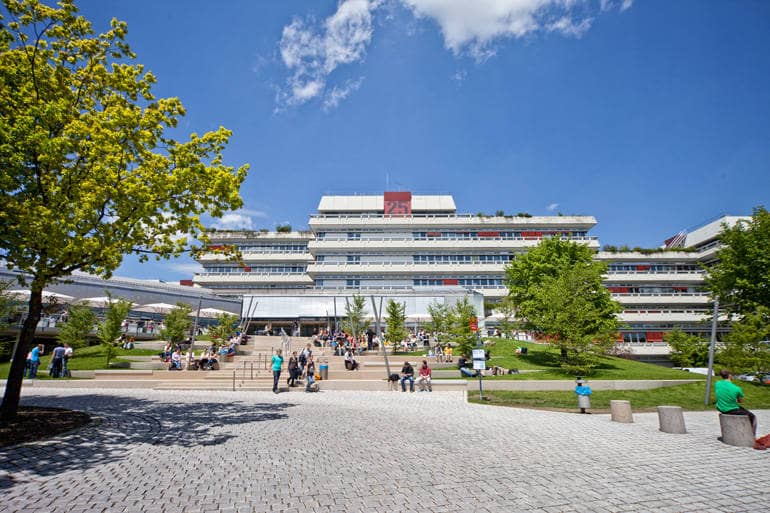
© Stadt Ulm
"ULM": the sound that the famous Swabian writer Thaddäus Troll once wrote, sounds as if someone tried to speak very, very, Swabian; as if they had a big dumpling in their mouth. Nowadays, in contrast, one can hear the distinct "Un-Swabian" accent when anyone in Ulm tries to pronounce the name of the Danube city. This, of course, is the result of people from over 140 different nations living together in the "Münsterstadt" (literally: "Minster City"). Not even half of the people who live in Ulm were born in Ulm.
There are many good reasons why a person would want to move to Ulm. The two most common reasons are: university studies and employment opportunities. Those together, again depend on the "Wissenschaftsstadt" (literally: "science city"), whose core was founded in 1967.
Today, the "Universität Ulm" (literally: Ulm University) together with the University Medical Center, is not only the largest employer in the city, but the university is also an establishment in which the Ulm residents are rightfully proud of. Prior to the founding of the University and the medical center, the city, above all, was an industrial center for automotive manufacturing and mechanical engineering, with businesses such as Kässbohrer, Magirus, and Wieland. Then in the beginning of the 1960s, the unnamed school of higher education was, not without struggle and persistance, taken away from the federal state of Baden-Württemberg (or so describes the beginning of the historiography of the small Natural Sciences' University's Alma Mater, which had around 12,000 students). Ulm citizens at the time formed a a "citizens' action committee" and implemented a "memorandum" about the land.
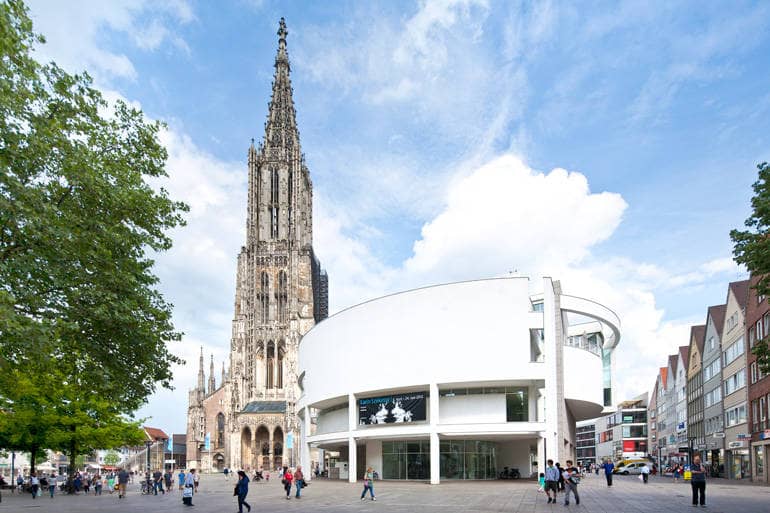
© Stadt Ulm
Not only the University at "Oberen Eselsberg" (literally: "Upper Donkey Mountain/hill") (which got its name in the Middle Ages because only donkeys were able to climb up the steep pathways) is testimony to the Civic Involvement (in Ulm, these words are written with capital letters). An impressive example of this is the Ulm Minster. What is remarkable is not only that, completed in 1890, it still has the tallest church steeple of 161.5 meters in the world, but also the fact that this enormous church for 20,000 people (at the time of the groundbreaking ceremony in 1377, there were only 10,000 citizens in Ulm) was solely financed by the citizens of Ulm and their monetary contributions. The best architechts of their time, such as Heinrich Parler and Ulrich von Ensingen, helped with the construction, and famous late gothic artists like Jörg Syrlin and Martin Schaffner, designed the inside.
The term "Ulmisch" (of or relating to Ulm or its inhabitants) doesn't only refer to the Ulm Minster. Typical "Ulmisch" also includes the brilliant white structure that has stood on the edge of the Minster Square since 1993: The Ulm Stadthaus. Constructed by the American architecht Richard Meier, the Stadthaus was the center of heavy criticizm, however, it was one of the first exhibition and event locations in the city at the time. The contrasts between tradition and modernity; old and new; and preservation and development of the new frontier; were at times the cause of conflict within the city of Ulm. These topics were, however, important because it assured that the citizens would not just sit back and only rely on the Minster--it made sure that the citizens would constantly be looking for ways to improve the city.
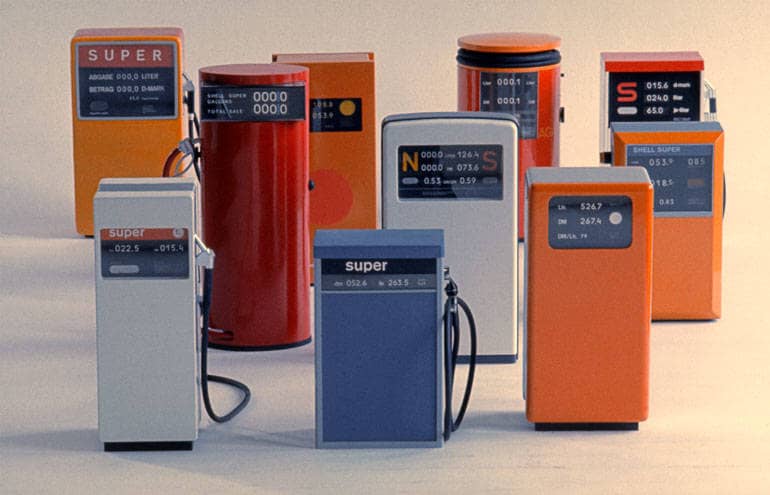
© Museum Ulm/ HfG-Archiv
Tanksäulen (1964/65)
Initiated by Inges Ehemann Otl Aicher, the swiss man Max Bill, and Inge
Aicher-Scholl, (the older sister of Hans and Sophie Scholl, and whose father
was also the first post-war Lord Mayor of Ulm), the Ulm School of Design (HfG)
was opened in 1955. The school was a successor of the Bauhaus and was just as
important to the the influence of design. Althought the Ulm School of
Design had to close in 1968 due to a lack of funds, "ulm" (written
small this time) is still seen today as a world leader in architecture and
design.

© Stadt Ulm
Who wants to know why the people of Ulm (yes, a few want to know) should have the second to last Monday of July off from work? Well, it is in Ulm that "Schwörmontag" or "Oath Day", is the official city holiday. At 11:00 AM, half of the city waits in front of the balcony of the "Schwörhaus" or "Oath House" to hear the city mayor give his open report on the the past year and his prediction of the political and social situation for the upcoming year. After his speech, the mayor speaks the 600 year-old text, "Reichen und Armen ein gemeiner Mann su sein...". This means that the mayor promises to serve the rich and poor in all equal, common, and honest dealings. During this oath, one can hear the ring of the "Schwörglocke" or "Swear Bell" from the Minster.
Later in the afternoon, the other half city residents are present when the "nabaden" takes place. "Nabada" or in standard German, "Herunterbaden" (literally: "swimming under"), is a festive, sort of carnevalesque river procession and chaotic parade on the waters of the Danube River. Afterwards, there is a huge party in the "Friedrichsau", one of the largest city parks, and people follow along in the festivities there and in many other locations of the city.
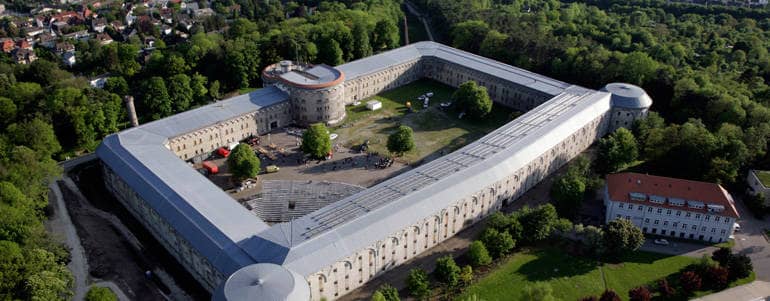
© Stadt Ulm
Ulm is surrounded by "forts"; are we in the Wild West? False. The forts, fortified manors, and bastions, that are found all over in Ulm and Neu-Ulm (Ulm's smaller, Bavarian sister city that is located on the other side of the Danube) are remaining sections of the Ulm fortress - the largest fortification in Europe. In the middle of the 19th century, 8,000 workers stomped over the protective barrier wall against the French troops because Ulm was strategically located at the center of the path between Vienna and Paris. The super fortress, which at its inauguration was already militarily outdated, has all sorts of rooms and dungeons that still exist. The Nazis used a section of Fort Oberer Kuhberg as a horrible "Preventative Detention Camp" for those who were politically against them. Kurt Schumacher, former chairman of the Social Democratic Party of Germany and famous Nazi Party opponent, was also confined there.
Today, Fort Oberer Kuhberg is used as a fortress museum and documentation center, which is worth a visit. Located in the upper Danube bastion, the tourist attraction, "Danube Swabian Museum", documents the German settlement history in southern Europe. In other sections of the fort, the rooms are used by youth clubs and organizations. Wilhelmsburg, another enormous section of the fort, is used now and then as an Open-Air-Stage.
Just like the Pied Piper of the city of Hameln, the sparrow is the same for Ulm: a loveable and endearing symbol. The story of the "Ulmer Spatz" describes the small nestbuilding birds that the people of Ulm saw during the construction of the Minster. The legend is that the inhabitants of Ulm had to figure out how to maneuver long beams of timber for the Minster through the city gates. These people were not very clever at the time and could not figure out how to get the timber through, due to the size of the timber in comparrison to the gate. They thought that they had to demolish the wall in order to get the long beams into the city. The legend says that at this moment, the inhabitants of Ulm saw a small sparrow carrying a piece of straw-- lengthwise in its beak, not horizontally--- in order to move through small spaces. From that moment, the people of Ulm realized they did not have to demolish the city gate, rather, they just had to place the beams on their carts the long way instead of cross-wise! From this point on, the Ulm Sparrow was seen as a "guardian" of the city.
Today not only parents of Ulm are referring to their children as "Spätzle". "Ulmer Spatzen" is also a nickname for the outstanding children and youth choir, as well as the team name of the SSV Ulm 1846 soccer team.

© Stadt Ulm
"The Tailor of Ulm", Albrecht Berblinger, is famous for having
built a functioning flying machine. Unfortunately, after his failed flight
attempt in 1811, due to his misunderstanding of the difference in temperature
over the Danube river, Berblinger was mocked and his reputation was tainted.
Even though he had a failed flight attempt, Albrecht Berblinger was seen as an
important pioneer in flight. Today as a
tribute to his work, the city of Ulm awards the Berblinger Prize to citizens
who have made developments and innovative ideas in the field of aviation. The
Berblinger Prize is seen as one of the highest-valued prizes in aviation
inventions and developments.
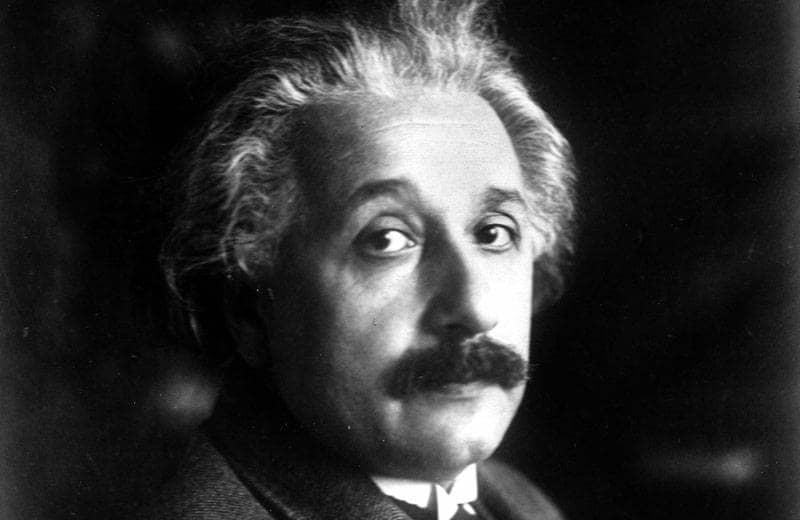
© Ullsteinbild
The hands-down most famous person from Ulm and founder of the Relativity Theory, is Albert Einstein. Born in 1879 in Ulm at Bahnhofstraße 20, he only spent the first 15 months of his life in Ulm. Even though the Adult Education Center (Volkshochschule) is named the "Einstein House", there is no direct link between Einstein and the Scholl family. Founder of the Ulm Adult Educational Center, which was well known throughout the country in the 1950s and 60s under the abbreviation "vh", Inge-Aicher Scholl was considered intellectually and democratically advanced. She was the older sister of Hans and Sophie Scholl, who were members of the student resistance group, the White Rose (die Weiße Rose), and were executed by the Nazis in 1943. Their father, Robert Scholl, was the first Ulm Mayor after the second world war and contributed greatly to the rebuilding of the city, which was over 80% destroyed.
There is much more to learn about the former 13th century "Freie Reichstadt", its history, and its people, but it is even better if you build your own impression by finding out more on your own! Let's get to it!

